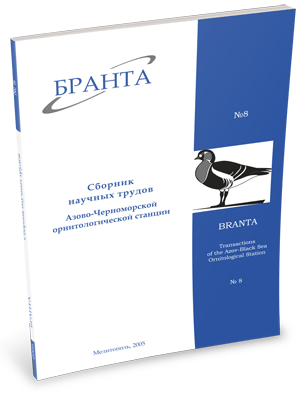
Transactions
of the Azov-Black Sea Ornithological Station



Distribution of breeding waders in tundra of the North-Western Taimyr according to the area and food capacity of habitats
T.A. Kirikova, S.P. Kharitonov, T.I. Varlygina, T.P. Pereladova, I. Tulp, H. Schekkerman
In this paper we tried to analyze relationships, which connect habitat distribution of waders with food capacity of these habitats and with the area available for breeding. The research was taken in two summer field seasons of 2001-2002 in a coastal Arctic tundra of the North-Western Taimyr (MedusaBay, Willem Barents Biostation).
Nests were mapped using a navigation unit "Garmin"-GPS-12. We analyzed choice of the nesting place for common wader species on the monitoring plot, divided them in two groups.
Our research detected relationships among forage abundance, breeding density and area of snow-free habitats, though these relationships vary for different species. We suppose that territorial distribution of waders is connected with a system of their nuptial relations. Breeding distribution for monogamous species (Dunlin, Pacific Golden Plover), inhabiting low-productive tundra, is determined by the area available for breeding and for gathering of forage, when for the species where only one bird carries out incubation (Little Stint, Curlew sandpiper) the reason is abundance and availability of foraging items in the closest habitats.
Read the paper in a PDF file